Planting and Caring Tips for Garden Perennial Geraniums
If you do not have time to grow seedlings of annual flowers every year, planting a perennial garden geranium in your country house will significantly reduce the labor intensity of flower bed decoration. Some growers call geraniums pelargonium. These are related, but different cultures. Pelargonium is an annual plant and is often grown in pots on a windowsill. The summer cottage area will be decorated with lush geranium bushes with colorful clusters of bright medium-sized flowers, which can be taken care of even by children and pensioners. Each summer, the area will be covered with a variegated carpet from blood-red to pale white shades.
Geranium in the flowerbed
Ornamental varieties of geraniums were bred from the ancestors of this plant that live in meadows and meadows. The flower has adapted well to the conditions of the wild, it is unpretentious and tenacious. Breeders noticed that the bush has beautiful carved leaves, which themselves can serve as a decoration for flower beds in the garden in the period between flowering, and have created many different varieties of an ornamental plant. The color of the inflorescences is very diverse: blood-red, white, lilac - any except yellow and orange. You can plant one branch in the country, provide good care, and it will begin to grow and soon turn into a lush openwork island. There is one drawback - brittle stems, but scientists are dealing with this problem and have already created species whose beauty will not be spoiled by rain or strong winds.
Why, among the huge number of perennial ornamental plants, do many owners of summer cottages like garden geraniums? If you have the time, energy and desire, you can plant orchid roses and even completely exotic flowers, accustomed to tropical climates. And a person who comes to the dacha only on weekends and is forced to have time to pay attention to the garden, and the vegetable garden, and the flower garden in 2 days has no opportunity to provide difficult care for capricious pets. He needs decorative crops:
- For many years they grew in one place and did not require an annual planting.
- They were not afraid of drought and did not require daily watering.
- They tolerated frosty winters well.
- They did not get sick and were not attacked by pests.
- Didn't require weeding.
- They bloomed for a long time, but they had an attractive appearance without flowers.
All these qualities are possessed by perennial garden geraniums. Simple care, endurance and beauty of the plant attract the sympathy of summer residents to it.
There are many varieties of ornamental bush. By combining different varieties, you can create an interesting composition covered with multi-colored bunches all summer long. While the plants are still young and the leaves do not cover the entire area, one-year-old pelargonium will help fill the empty soil. They need about the same care, and in appearance, pelargonium does not differ much from geranium and does not violate the style of the flower garden.
Plot for a flower garden
Garden geranium can grow in any soil, but to get lush inflorescences, you need to plant it in light, fertile soil. If your dacha has solid clay, add manure, peat or compost to it. This flower does not like transplants and can decorate the site for up to 10 years. If you want to see a different design every year, add a flower garden with annual geraniums, pelargonium is well suited.
When choosing varieties, pay attention to the living conditions of the plants in your flower garden. From a variety of species, you can choose those that will feel great under the existing lighting and soil moisture.
- In sunny and dry places, you can plant Georgian red-brown and large-flowered geraniums.
- In damp and well-lit areas, Himalayan, Gorgeous and Meadow geraniums will grow.
- Shade and dry ground loves the Balkan and blood red variety.
- Wet shady areas are suitable for swamp, Himalayan and meadow varieties.
You can skillfully combine high and low varieties so that in one area the light-loving varieties are in the sun, and the shade-loving ones - in the shade. Blood-red, meadow forest, marsh geranium grows above half a meter. The dwarf varieties include the Himalayan, large-rhizome and Dalmatian.
Geranium propagation
Planting material can be purchased at the gardening mall. Examine the rhizome, pay special attention to the place where the shoots will go. If it is soft, rotten, or dry, do not take it. The root itself must be firm, many processes depart from it. Do not purchase specimens in winter that have already begun to wake up and develop buds. Such tubers need special care: they will have to be temporarily placed in a container with soil, and when the heat comes, they will be planted in open ground.
You can prepare the material for planting yourself. To do this, you need to collect seeds or separate a part from an adult plant. If you want to sow seeds, keep in mind that in some species they do not form - you will waste time waiting. If different geraniums grow on the site, they can become pollinated, and the colors that you expected will appear on the flower bed.
Advice
To collect the seeds, wrap a paper bag around the pod. When the shell bursts, the grains will not fall to the ground, but remain in the bag.
During vegetative propagation, a part of the bush with roots and a growth bud is separated. Before planting in a new location, inspect the fragment and cut off damaged and dried out areas. In spring and autumn, you can cut a stalk from a plant you like and plant it in open ground. With vegetative propagation, the bushes will bloom in the same year; when sowing seeds, you will have to wait for next summer.
How to plant geraniums correctly
Perennial garden geranium quickly develops long roots. Let the young shoots take root well and grow without hindrances for the first time: dig a deep hole so that about 20 cm of loose earth remains under the longest root. There should be at least 30 cm between the holes. Before planting, treat the rhizomes with a disinfectant solution, and the lower sections of the cuttings with growth stimulants.
Planting is carried out in early spring or autumn. Pour a mound of fertile soil on the bottom, set the rhizome and distribute the underground shoots evenly over the soil elevation. Cover with earth and water to compact the soil. The first year of leaves will not be very many, they will not protect the flower garden from weeds. To avoid weeding, mulch the soil. Pelargonium, asters or other annuals can fill the voids.
Bury the cuttings in the soil about 5 cm. Until the shoots take root, they need care. Cover sprouts from frost with foil or non-woven material. Make sure the soil is moist, but the water does not stagnate. In hot weather, all plantings in the first days should be shaded from the scorching rays of the sun.
Simple care of the flower garden
Garden geraniums came to our summer cottages from the wild and retained the ability to take care of themselves. The owners will only need to help the plant a little if conditions become too unfavorable. Dense greenery prevents weeds from breaking through, and while the bushes are still young, a layer of mulch will protect open areas, and excess grass will not grow there. Garden geranium is also resistant to drought, but so that the bushes are lush and flowering abundant, water the soil as it dries.
After flowering, you do not need to walk around with a knife and cut off dead buds. Withered bunches fall under lush leaves and do not spoil the flower bed with their unsightly appearance.You can leave the flower stalks, but the bursting pods will throw seeds on the ground, from which young shoots will grow next year. Decide for yourself what it is more convenient for you to do: removing the seed pods that have appeared or thinning the plantings.
Both pelargonium and garden geranium contain essential oils with a high concentration of phytoncides. Pests and pathogens do not like this scent. Bushes can be planted not only in a flower garden, but also in vegetable beds, and you do not have to protect edible crops from insects and various infections. Sometimes, due to poor conditions, if the flowers are not properly cared for, they can be attacked by:
- Powdery mildew. When you see a white bloom, cut off the affected parts and spray the flower garden with Bordeaux mixture.
- Gray rot. Poorly treatable, destroy the diseased bush and drain the flower bed or add hydrogel to the soil to reduce moisture.
- Spotting. If you notice brown spots, treat the geranium with a fungicide.
Advice
Do not care for geraniums in extreme heat. At high temperatures, the release of essential oils increases, and allergies or skin irritation may occur.
In the spring, when the plants in the country begin to wake up, feed the geraniums with nitrogen fertilizers. After a month, you can feed with a complex preparation, and during flowering, the bushes require phosphorus and potassium. Since tuberous and mountainous species do not need abundant nutrition, keep the dose of fertilizer to a minimum. That's all the basic operations that include caring for perennial garden geraniums.
Output
Garden geraniums can grow outdoors for up to 10 years, unlike its cousin pelargonium, an annual plant. The flower is not picky about the composition of the soil, if you choose varieties in accordance with the illumination, it will grow well both in the sun and in the shade. Geraniums do not need complex care, the plant winters well without shelter. Essential oils keep pests away from the flower garden. A low, large-rhizome geranium can grow in a vegetable patch, protecting garden crops.
Perennial garden geranium is not only an ornamental, but also a useful plant. It is used in folk medicine and in perfumery. If you put the leaves in the jam, mold will not appear in the jar. All summer long, the site will be enlivened by a magnificent white, blood red, pink and lilac composition. The flower beds in the garden are decorated with bright inflorescences and lush openwork leaves.
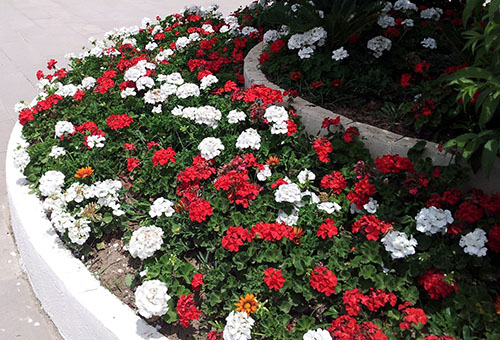
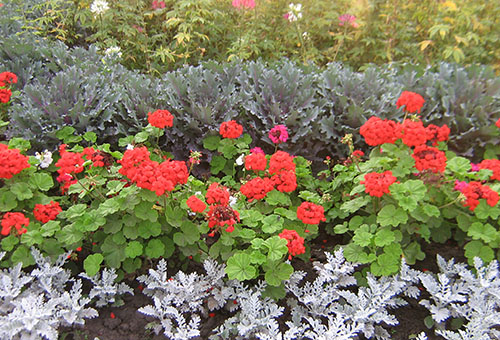
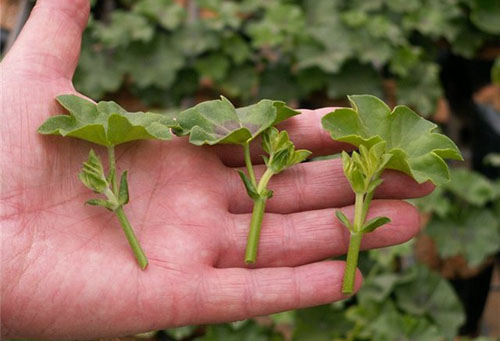
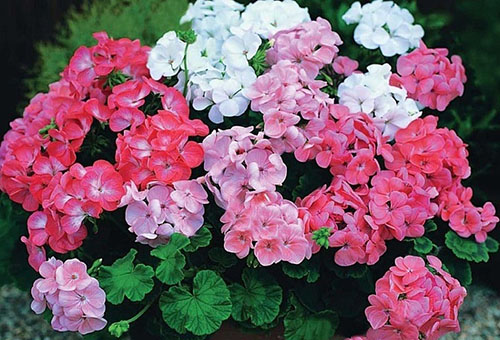

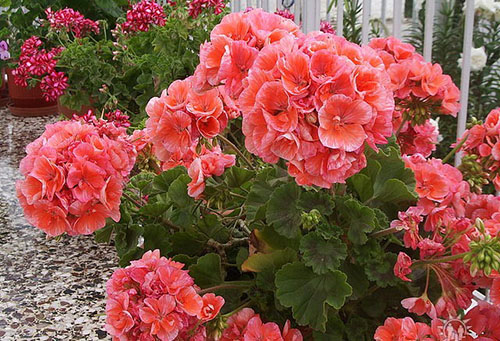
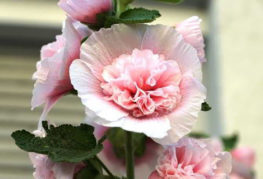
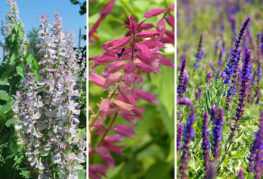
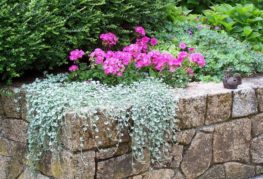
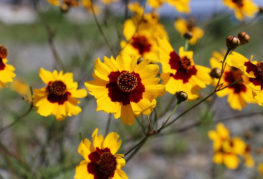
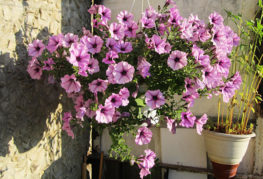
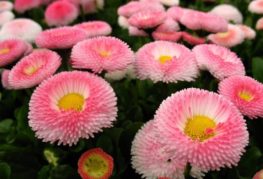
and will be published shortly.